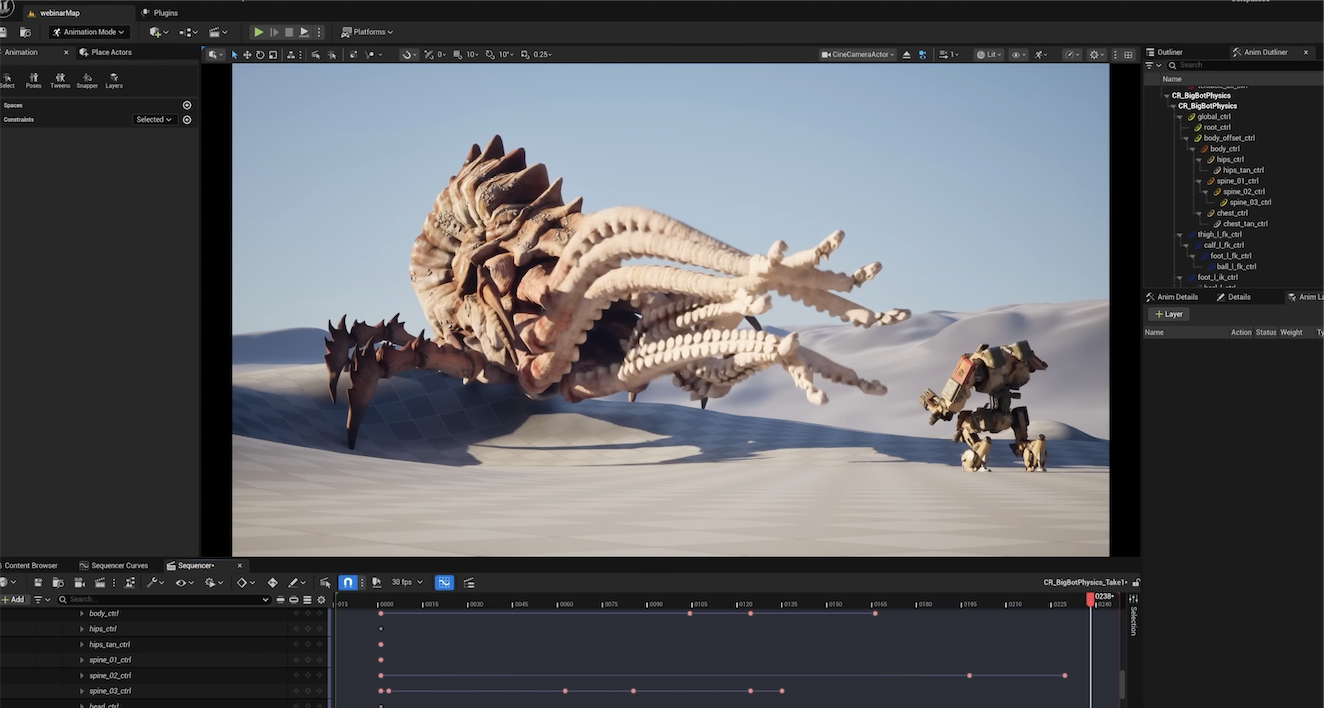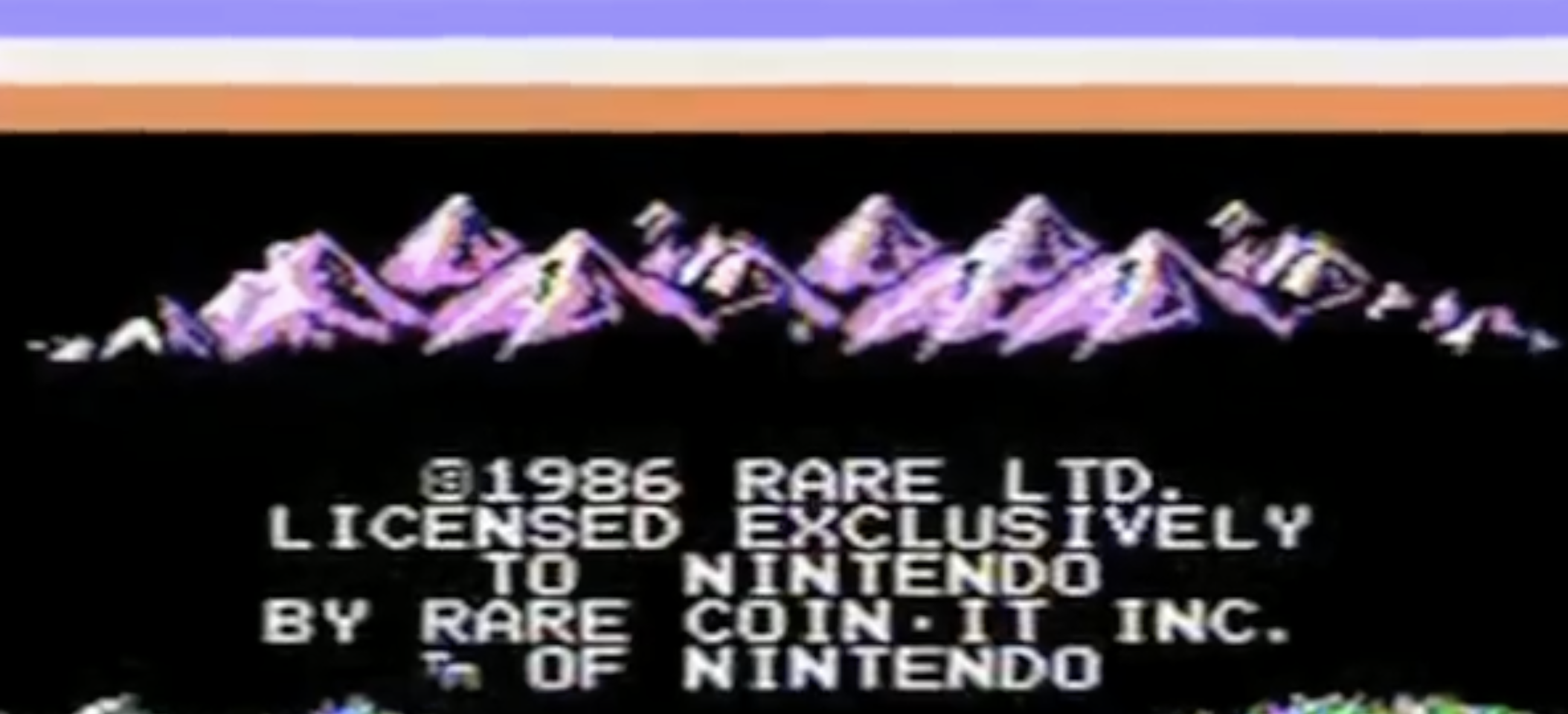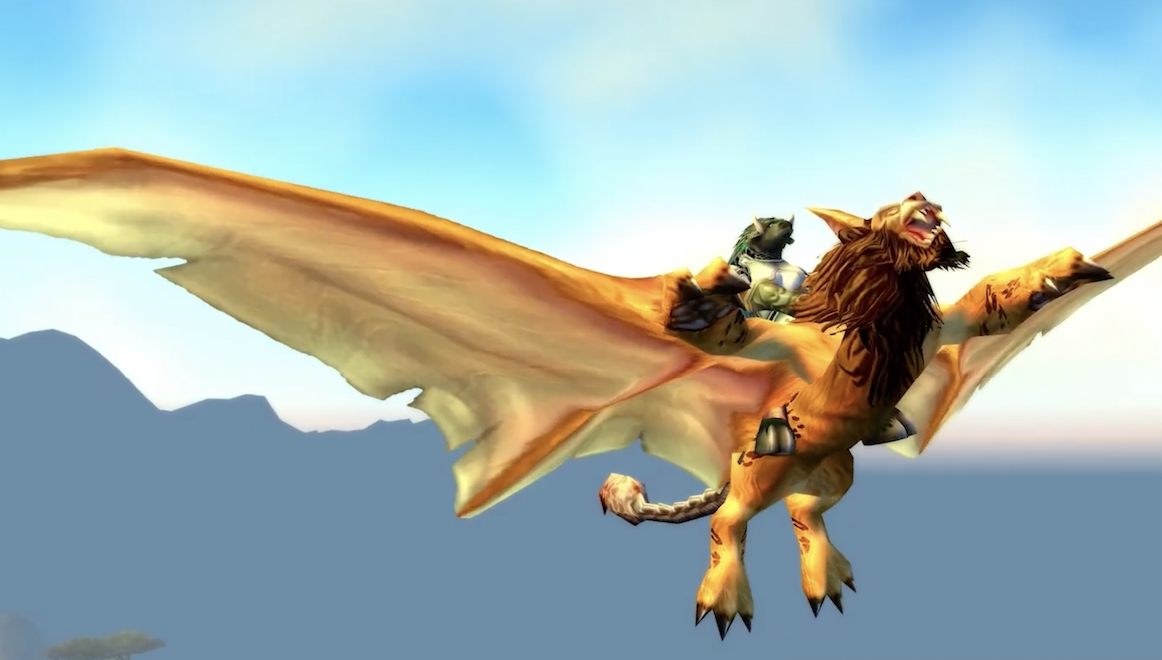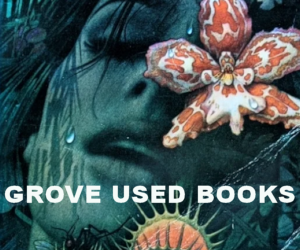| Pandemic Studios: Containing an Outbreak |
RT · Archive |
| Interplay Part 2: Meteoric Crash |
RT · Archive |
| Gears of War Part 3: Trust Your Guts |
RT · Archive |
| Splinter Cell Part 1: Stealth Attack |
RT · Archive |
| Gears of War Part 1: Emergence Day |
RT · Archive |
| Capcom Horror Part 2: …was that you? |
RT · Archive |
| Spider-Man Part 3: With Great Power |
RT · Archive |
| Irrational Part 2: Demons and Heroes |
RT · Archive |
| World of Warcraft Part 1: Crafting a World of War |
RT · Archive |
| Batman Part 4: Knight’s End |
RT · Archive |
| Rare Part 4: Invaluable |
RT · Archive |
| EA Sports Part 5: Overtime |
RT · Archive |
| Castlevania (Konami) Part 2: Chorus of Confliction |
RT · Archive |
| Capcom Horror Part 3: …where’d you go? |
RT · Archive |
| Aliens Part II: Deadliest of the Species |
RT · Archive |
| Capcom Horror Part 6: …is this the end? |
RT · Archive |
| Remedy Part 2: Perfection is a Dish Best Served Late |
RT · Archive |
| Command & Conquer Part 2: Corporations & Communists |
RT · Archive |
| Bethesda Part 1: The Open World |
RT · Archive |
| DICE Part 2: Time Travelers |
RT · Archive |
| Sony Santa Monica Part 1: The God from the West |
RT · Archive |
| Batman Part 2: The Dark Knight Reprises |
RT · Archive |
| X-COM Pt 2: X-Communicated |
RT · Archive |
| Tomb Raider Part 1: Hard Core Design |
RT · Archive |
| Gearbox Software Pt 2: High Gear |
RT · Archive |
| EA Sports Part 3: Getting in the Game |
RT · Archive |
| Assassin’s Creed Part 1: Sneaking In |
RT · Archive |
| Interplay Part 1: Meteoric Rise |
RT · Archive |
| The History of “All Your History” Part 2: Ashes To Ashes |
RT · Archive |
| Call of Duty Part 5: Declaring Victory |
RT · Archive |
| Fable Part 1: Hopeful Youths |
RT · Archive |
| Rare Part 3: One of a Kind |
RT · Archive |
| Interplay Part 3: Life In The Crater |
RT · Archive |
| Valve Ep 1: Unlikely Heroes (w/ Gabe Newell Interview) |
RT · Archive |
| Aliens Part I: Heart of Darkness |
RT · Archive |
| id Software Part 2: The Third Dimension |
RT · Archive |
| id Software Part 5: The Silent Decade |
RT · Archive |
| Call of Duty Part 1: Breaking Out |
RT · Archive |
| BioWare Part 1: Setting Out |
RT · Archive |
| XCOM Part 4: Aliens: Resurrection |
RT · Archive |
| DICE Part 3: Unconventional Warfare |
RT · Archive |
| Valve Part 5: Game Changer |
RT · Archive |
| EA Sports Part 2: Maddening |
RT · Archive |
| Blizzard Entertainment Part 1: Opening Build Order |
RT · Archive |
| id Software Part 1: Scrolling Around |
RT · Archive |
| Gears of War Part 2: Hope Runs Deep |
RT · Archive |
| Creative Assembly Part 2: Seizing the Initiative |
RT · Archive |
| 2009 Gaming: All Your History (Year’s Open) S1E23 |
RT · Archive |
| CES Part 2: Booting Up – Consumer Electronics Show |
RT · Archive |
| The History of “All Your History” Part 1: In the Beginning |
RT · Archive |
| Splinter Cell Part 2: One Man Army |
RT · Archive |
| Gearbox Software Pt 1: Low Gear |
RT · Archive |
| Capcom Horror Part 5: …who’s there? |
RT · Archive |
| Castlevania Part 4: Crescendo of Chaos |
RT · Archive |
| Nintendo Part 7: Wii United |
RT · Archive |
| Mass Effect 2: Part 4 of 5: Art Director |
RT · Archive |
| BioWare Part 2: Gaining Allies |
RT · Archive |
| Castlevania (Konami) Part 1: Overture of the Dawn |
RT · Archive |
| Nintendo Part 4: Revenge Is A Disc Best Served Cold |
RT · Archive |
| Devil May Cry – Part I |
RT · Archive |
| Capcom Horror Part 4: …what happened to the light? |
RT · Archive |
| Batman Part 1: Batman Begins |
RT · Archive |
| Best of 2010 Part 2: High Noon |
RT · Archive |
| X-COM Pt 3: Extinguished |
RT · Archive |
| Irrational Part 1: Offshooters |
RT · Archive |
| Creative Assembly Part 3: Global Conquest |
RT · Archive |
| Bethesda Part 3: Rebirth |
RT · Archive |
| EA Sports Part 4: Pros and Contracts |
RT · Archive |
| Bethesda Part 4: The Next Level |
RT · Archive |
| Mass Effect 2: Part 2 of 5: Lead Animator |
RT · Archive |
| Volition Part 1: Degrees of Freedom |
RT · Archive |
| Creative Assembly Part 1: Opening Salvos |
RT · Archive |
| Devil May Cry – Part II |
RT · Archive |
| Rare Part 1: Unusual |
RT · Archive |
| Command & Conquer Part 3: Diverging & Merging |
RT · Archive |
| Capcom Horror Part 1: …did you hear that? |
RT · Archive |
| Call of Duty Part 2: Seizing the High Ground |
RT · Archive |
| Rockstar Part 1: The Beginning of the Beast |
RT · Archive |
| Aliens Part IV: Another Bug Hunt |
RT · Archive |
| EA Sports Part 1: Play Ball |
RT · Archive |
| Blizzard Entertainment Part 2: Harvesting Resources |
RT · Archive |
| Assassin’s Creed Part 2: Free Running Out |
RT · Archive |
| Nintendo Part 2: Pipe Dreams Do Come True |
RT · Archive |
| Bethesda Part 5: Maxed Stats |
RT · Archive |
| Fable Part 2: Growing Old |
RT · Archive |
| Aliens Part III: Versus Predator |
RT · Archive |
| Halo Part 5: Beyond Bungie… and Beyond |
RT · Archive |
| Bethesda Part 2: Overload |
RT · Archive |
| Best of 2010 Part 1: Rush Tactics |
RT · Archive |
| Mass Effect 2: Part 1 of 5: Concept Artist |
RT · Archive |
| id Software Part 4: Aftershocks |
RT · Archive |
| Nintendo Part 6: Wiidemption |
RT · Archive |
| Command & Conquer Part 1: Supply & Demand |
RT · Archive |
| Rockstar Part 5: Cleaning Up Their Act |
RT · Archive |
| BioWare Part 4: Upgrading Stats |
RT · Archive |
| Silent Hill Part 1 (Halloween Game Development History) |
RT · Archive |
| Valve Part 3: The Trouble with Sequels |
RT · Archive |
| Command & Conquer Part 5: Death & Beyond |
RT · Archive |
| Blizzard Entertainment Part 5: The Golden Throne |
RT · Archive |
| Sony Santa Monica Part 2: Clash of the Directors |
RT · Archive |
| 2012 Pt 2: The Rhode To Ruin |
RT · Archive |
| Call of Duty Part 3: Supporting Fire |
RT · Archive |
| Halo Part 2: Evolving Combat |
RT · Archive |
| Valve Part 6: Beyond the Crowbar… And Beyond |
RT · Archive |
| Spider-Man Part 2: (Almost) Whatever a Spider Can |
RT · Archive |
| Valve Part 4: Half Times Two |
RT · Archive |
| The History of Tomb Raider Part 2: A Survivor Is Born |
RT · Archive |
| Retro City Rampage |
RT · Archive |
| Nintendo Part 5: Boxed In |
RT · Archive |
| Rockstar Part 6: The Big Score |
RT · Archive |
| The Video Game Crash of 1983: Continue? |
RT · Archive |
| Command & Conquer Part 4: New & Old |
RT · Archive |
| X-COM Part 1: British Invasion |
RT · Archive |
| Rockstar Part 4: In Hot Water |
RT · Archive |
| DICE Part 1: Sleeping Giant |
RT · Archive |
| BioWare Part 3: Leveling Up |
RT · Archive |
| Mass Effect 2: Part 5 of 5: Lead Cinematic Designer |
RT · Archive |
| Nintendo Part 1: Leave Luck To Heaven |
RT · Archive |
| id Software Part 3: The Game That Stopped The World |
RT · Archive |
| Nintendo Part 3: Going To War |
RT · Archive |
| DICE Part 4: Firing on All Cylinders |
RT · Archive |
| Batman Part 3: World’s Greatest Defective |
RT · Archive |
| Metroid Part 2: Super Hero |
RT · Archive |
| Metroid Part 1: Power Ups |
RT · Archive |
| Metroid Part 3: Comeback Kid |
RT · Archive |
| Rockstar Part 2: Overnight Sensation |
RT · Archive |
| Volition Part 2: Gangbusters |
RT · Archive |
| World of Warcraft Part 2: Maxing Out |
RT · Archive |
| Rare Part 2: In Demand |
RT · Archive |
| Blizzard Entertainment Part 3: Zerg Rush |
RT · Archive |
| Valve Part 2: Half-Life’s Afterlife |
RT · Archive |
| Splinter Cell Part 3: The Many Faces of Sam Fisher |
RT · Archive |
| Mass Effect 2: Part 3 of 5: Art Producer |
RT · Archive |
| Castlevania Part 3: Oratorio of Ovation |
RT · Archive |
| Halo Part 4: The Air is Thin, but the View is Good |
RT · Archive |
| Rare Part 5: Unique |
RT · Archive |
| Best of 2010 Part 3: Finishing Blows |
RT · Archive |
| Rockstar Part 3: Chart Toppers |
RT · Archive |
| Call of Duty Part 4: Pressing the Advantage |
RT · Archive |
| CES Part 1: Plugging In – Consumer Electronics Show |
RT · Archive |
| Halo Part 3: That Was Perfect… Now Do It Better |
RT · Archive |
| E3: Where Games Go to Play |
RT · Archive |
| 2012 Pt 1: Double Trouble |
RT · Archive |
| Castlevania Part 5: Epiphany of Epitome |
RT · Archive |
| Remedy Part 1: Cars, Guns, and Payoffs |
RT · Archive |
| Blizzard Entertainment Part 4: World War |
RT · Archive |
| Season 5 Teaser |
RT · Archive |
| Spider-Man Part 1: Bit by the Gaming Bug |
RT · Archive |
| Metal Gear Part 3: Detonation |
RT · Archive |
| Metal Gear Part 5: Beyond Solid |
RT · Archive |
| Metal Gear Part 4: The Return of Solid Snake |
RT · Archive |
| Metal Gear Part 2: Solid Gold |
RT · Archive |
| E3 2012 – Bro Team Presents The History of E3 |
RT · Archive |
| Adventure Games Part 5 |
RT · Archive |
| Adventure Games Part 4 |
RT · Archive |
| Metal Gear Part 1: Infiltration |
RT · Archive |
| Adventure Games Part 3 |
RT · Archive |
| Adventure Games Part 1 |
RT · Archive |
| Adventure Games Part 2 |
RT · Archive |
| Street Fighter Part 4: Return of the Champs |
RT · Archive |
| Prince of Persia Part 1 |
RT · Archive |
| Street Fighter Part 2: Greatest of All Time |
RT · Archive |
| Prince of Persia Part 3 |
RT · Archive |
| DoTA Part 3: Pro League |
RT · Archive |
| David Jaffe Part 2 |
RT · Archive |
| Prince of Persia Part 2 |
RT · Archive |
| Street Fighter Part 3: Super Turbo Alpha Gold |
RT · Archive |
| David Jaffe Part 1 |
RT · Archive |
| 2011 Part 1: Boss Battle |
RT · Archive |
| DoTA Part 2: Top Players |
RT · Archive |
| Street Fighter Part 1: Raised on the Streets |
RT · Archive |
| DOTA Part 1: The Pebble that Started the Avalanche |
RT · Archive |
| 2011 Part 2: Second Chances |
RT · Archive |
| 2011 Part 3: Crescendo |
RT · Archive |
| Crytek Part 2: Cryating Worlds |
RT · Archive |
| Crytek Part 1: Cryating Worlds |
RT · Archive |
| MMO Part 4: End Game Content |
RT · Archive |
| Call of Duty: Appendix A |
RT · Archive |
| MMO Part 3: High Level |
RT · Archive |
| Halo Part 1: Halo Before the Ring |
RT · Archive |
| MMO Part 2: Expansions |
RT · Archive |
| MMO Part 1: Crawling Through the MUD |
RT · Archive |









Recent Comments